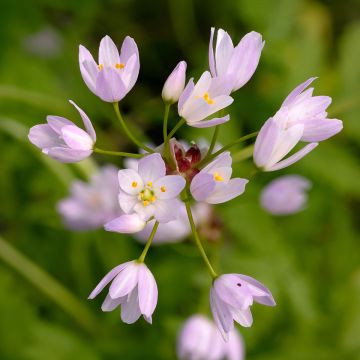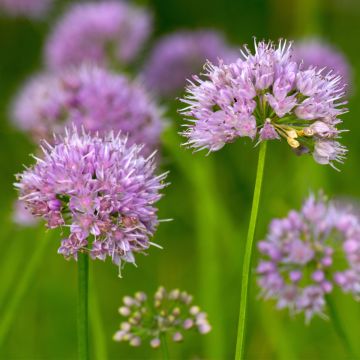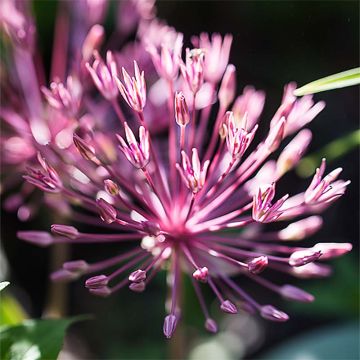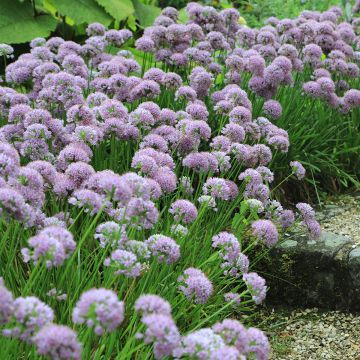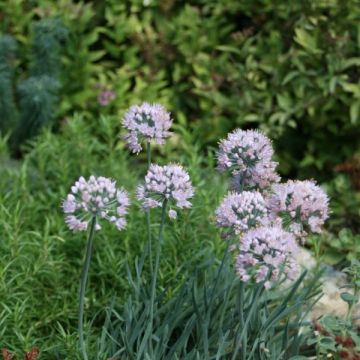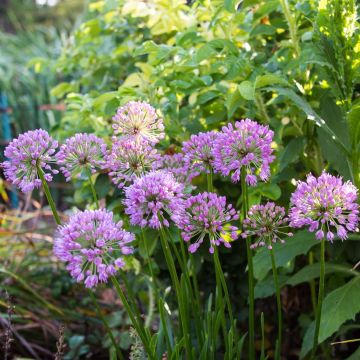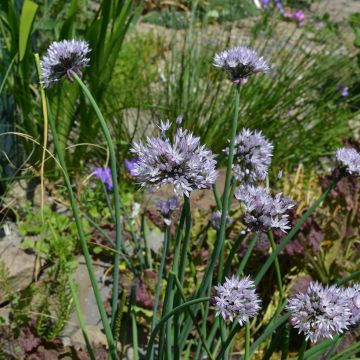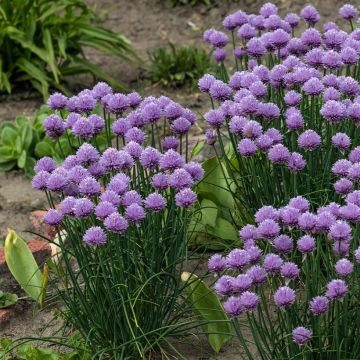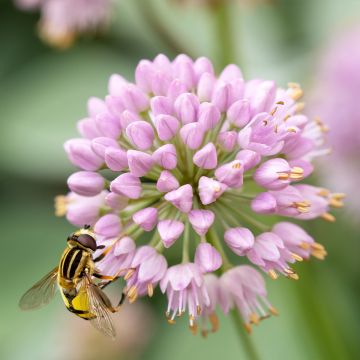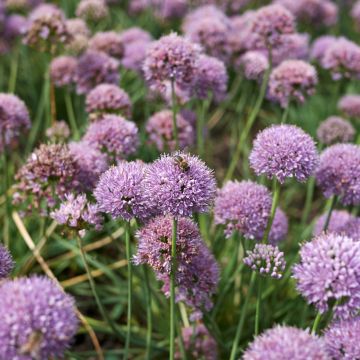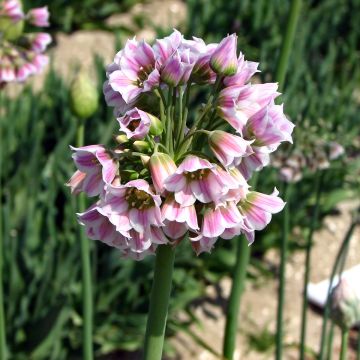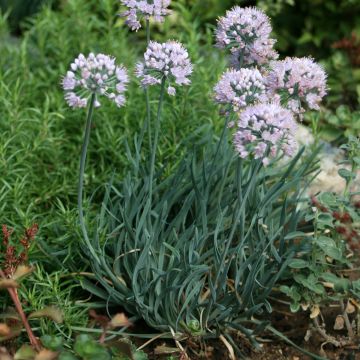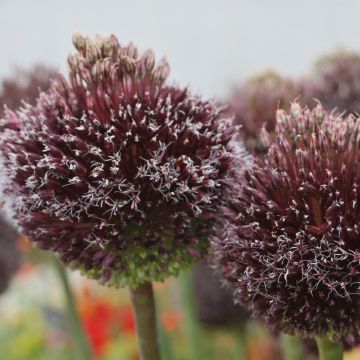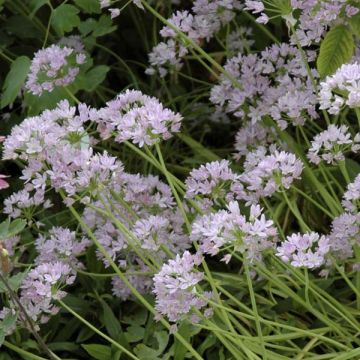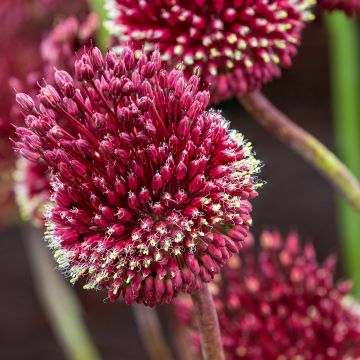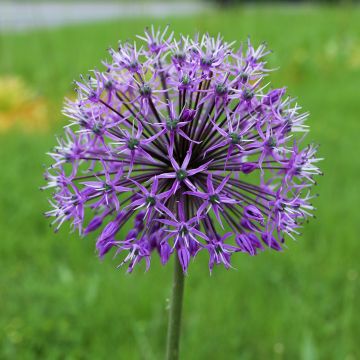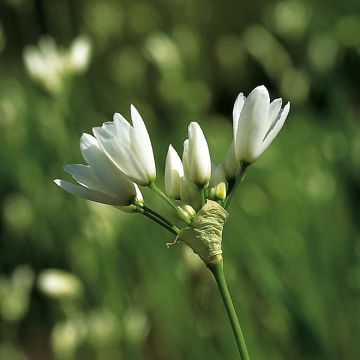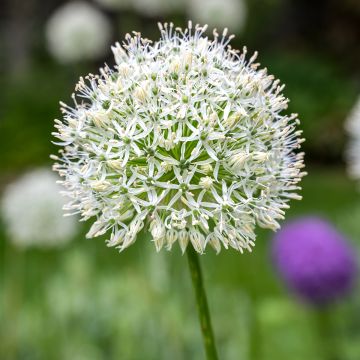Shipping country and language
Your country of residence may be:
Your country of residence is:
For a better user experience on our website, you can select:
Your shipping country:
Andorra
Austria
Belgium
Bulgaria
Canada
Chile
Croatia
Cyprus
Czechia
Denmark
Estonia
Finland
France
Germany
Greece
Hungary
Iceland
Ireland
Italy
Latvia
Lithuania
Luxembourg
Malta
Monaco
Netherlands
Poland
Portugal
Romania
Slovakia
Slovenia
Spain
Sweden
Switzerland
United Kingdom
We only deliver seed and bulb products to your country. If you add other products to your basket, they cannot be shipped.
Language:
French
German
Spanish
English
My Account
Hello
My wish lists
Plantfit
Log in / Register
Existing customer?
New customer?
Create an account to track your orders, access our customer service and, if you wish, make the most of our upcoming offers.
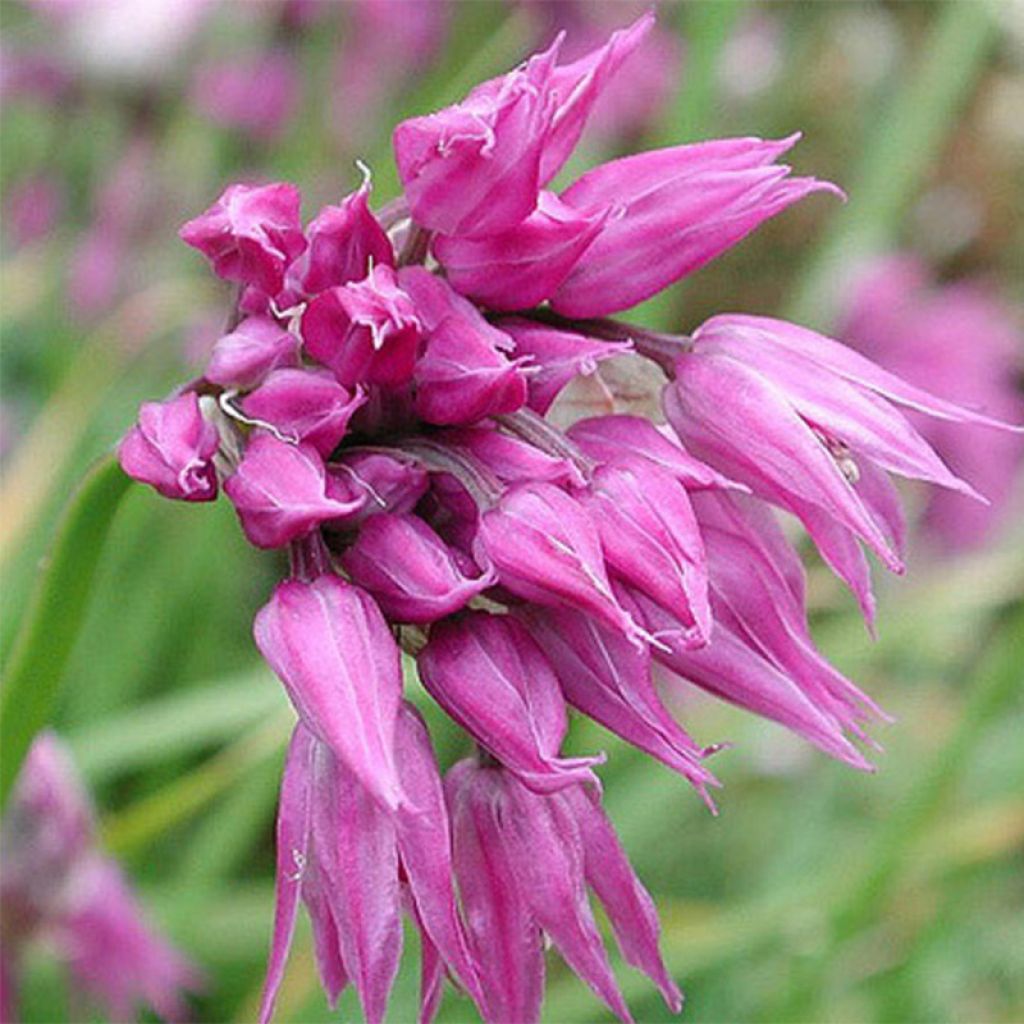

Ail d'ornement - Allium cyathophorum var farreri
Allium cyathophorum var. farreri
Allium cyathophorum var farreri
Ornamental Onion, Flowering Garlic
The order arrived promptly, with the bulbs carefully packaged. Nothing to complain about.
Thierry M., 08/10/2018
Why not try an alternative variety in stock?
View all →Order in the next for dispatch today!
Dispatch by letter from €3.90.
Delivery charge from €5.90 Oversize package delivery charge from €6.90.
More information
This item is not available in your country.
Schedule delivery date,
and select date in basket
This plant carries a 6 months recovery warranty
More information
We guarantee the quality of our plants for a full growing cycle, and will replace at our expense any plant that fails to recover under normal climatic and planting conditions.
From €5.90 for pickup delivery and €6.90 for home delivery
Express home delivery from €8.90.
Does this plant fit my garden?
Set up your Plantfit profile →
Description
Allium cyathophorum var. farreri is a compact and floriferous ornamental garlic. It is a botanical species native to the high mountains of China. It is undemanding and easy to grow in well-drained, even rocky soil, and is perfectly adapted to a mountain climate. It offers abundant flowering in early summer, in the form of curious umbels resembling rounded and pendant clusters of campanulate pink-purple flowers. It is decorative, accommodating, and worry-free.
Allium cyathophorum var. farreri is a wild mountain plant, native to the grassy slopes that cover the sides of the high massifs of Northwest China, where it grows up to an altitude of 4600m (15092ft). This herbaceous bulbous plant belongs to the Amaryllidaceae family, like cultivated garlic, onion, and leek. It has a fleshy and fibrous storage organ that multiplies by forming bulblets. The inflorescences, perched at 30cm (12in) in height at the end of curved stems, correspond to round and pendant umbels that can measure up to 6cm (3in) in diameter. They are composed of numerous tubular flowers with purple petals. This flowering emerges from a dense herbaceous clump composed of linear and narrow leaves, which are shorter than the flower stalks. Flowering occurs between June and July. The plant self-sows spontaneously in light soil.
Easy to grow in dry or moist but well-drained soil, hardy down to -15°C (5°F), and tolerant of partial shade, Allium cyathophorum var. farreri can be used in borders, rock gardens, or in pots to enjoy its beautiful flowering on a balcony or patio. Enhance your bouquets with its fresh or dried flowers. Plant it in groups of 5 that you can tuck between ornamental grasses, or dry-loving perennials such as hyssops, thymes, arborescent or creeping wormwoods, silver baskets, or even aubrietas.
Vegetable garden tip: plant some ornamental garlic in the middle of strawberries to protect them from fungal diseases. They will add a few pleasant blooms that are sometimes lacking among vegetables.
Allium cyathophorum var. farreri in pictures
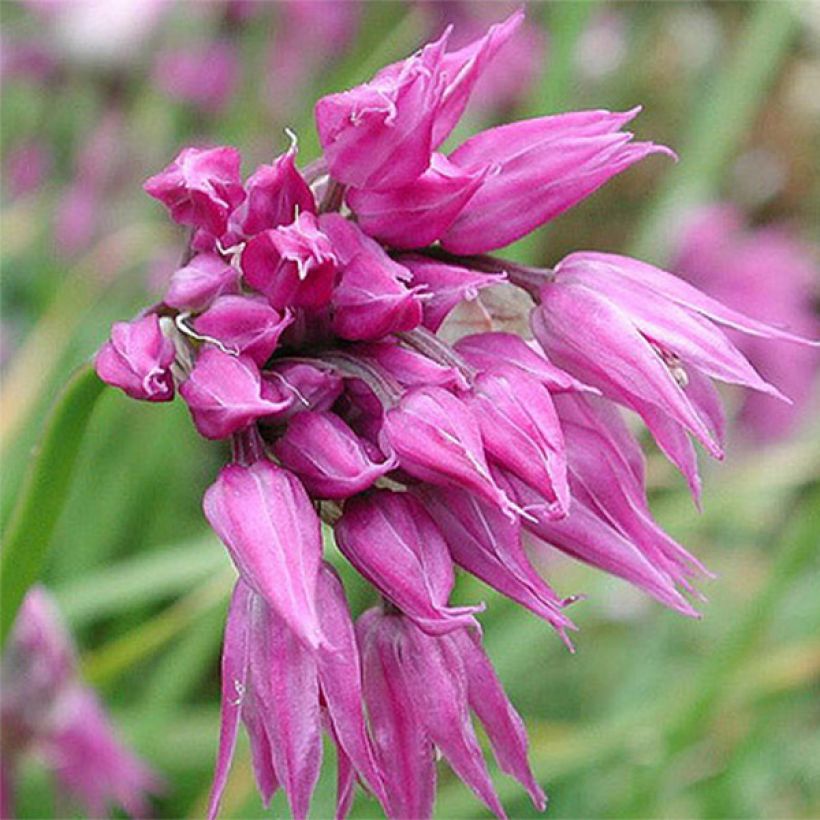

Plant habit
Flowering
Foliage
Botanical data
Allium
cyathophorum var farreri
Alliaceae - Liliaceae
Ornamental Onion, Flowering Garlic
China
Other Allium
Planting and care
Alliums are easy-to-grow plants. Plant them preferably before the end of October so that they have time to establish. They are sensitive to winter humidity, especially in poorly drained soil. Give them a sunny spot, or partial shade for Allium cyathophorum, in well-drained, even rocky soil that stays moist during flowering. Plant them 10cm (4in) deep, spaced 7cm (3in) apart for small bulbs. They are undemanding, but prefer poor soils where they are more long-lasting and more floriferous.
Planting period
Intended location
Care
- , onOrder confirmed
Reply from on Promesse de fleurs
Haven't found what you were looking for?
Hardiness is the lowest winter temperature a plant can endure without suffering serious damage or even dying. However, hardiness is affected by location (a sheltered area, such as a patio), protection (winter cover) and soil type (hardiness is improved by well-drained soil).

Photo Sharing Terms & Conditions
In order to encourage gardeners to interact and share their experiences, Promesse de fleurs offers various media enabling content to be uploaded onto its Site - in particular via the ‘Photo sharing’ module.
The User agrees to refrain from:
- Posting any content that is illegal, prejudicial, insulting, racist, inciteful to hatred, revisionist, contrary to public decency, that infringes on privacy or on the privacy rights of third parties, in particular the publicity rights of persons and goods, intellectual property rights, or the right to privacy.
- Submitting content on behalf of a third party;
- Impersonate the identity of a third party and/or publish any personal information about a third party;
In general, the User undertakes to refrain from any unethical behaviour.
All Content (in particular text, comments, files, images, photos, videos, creative works, etc.), which may be subject to property or intellectual property rights, image or other private rights, shall remain the property of the User, subject to the limited rights granted by the terms of the licence granted by Promesse de fleurs as stated below. Users are at liberty to publish or not to publish such Content on the Site, notably via the ‘Photo Sharing’ facility, and accept that this Content shall be made public and freely accessible, notably on the Internet.
Users further acknowledge, undertake to have ,and guarantee that they hold all necessary rights and permissions to publish such material on the Site, in particular with regard to the legislation in force pertaining to any privacy, property, intellectual property, image, or contractual rights, or rights of any other nature. By publishing such Content on the Site, Users acknowledge accepting full liability as publishers of the Content within the meaning of the law, and grant Promesse de fleurs, free of charge, an inclusive, worldwide licence for the said Content for the entire duration of its publication, including all reproduction, representation, up/downloading, displaying, performing, transmission, and storage rights.
Users also grant permission for their name to be linked to the Content and accept that this link may not always be made available.
By engaging in posting material, Users consent to their Content becoming automatically accessible on the Internet, in particular on other sites and/or blogs and/or web pages of the Promesse de fleurs site, including in particular social pages and the Promesse de fleurs catalogue.
Users may secure the removal of entrusted content free of charge by issuing a simple request via our contact form.
The flowering period indicated on our website applies to countries and regions located in USDA zone 8 (France, the United Kingdom, Ireland, the Netherlands, etc.)
It will vary according to where you live:
- In zones 9 to 10 (Italy, Spain, Greece, etc.), flowering will occur about 2 to 4 weeks earlier.
- In zones 6 to 7 (Germany, Poland, Slovenia, and lower mountainous regions), flowering will be delayed by 2 to 3 weeks.
- In zone 5 (Central Europe, Scandinavia), blooming will be delayed by 3 to 5 weeks.
In temperate climates, pruning of spring-flowering shrubs (forsythia, spireas, etc.) should be done just after flowering.
Pruning of summer-flowering shrubs (Indian Lilac, Perovskia, etc.) can be done in winter or spring.
In cold regions as well as with frost-sensitive plants, avoid pruning too early when severe frosts may still occur.
The planting period indicated on our website applies to countries and regions located in USDA zone 8 (France, United Kingdom, Ireland, Netherlands).
It will vary according to where you live:
- In Mediterranean zones (Marseille, Madrid, Milan, etc.), autumn and winter are the best planting periods.
- In continental zones (Strasbourg, Munich, Vienna, etc.), delay planting by 2 to 3 weeks in spring and bring it forward by 2 to 4 weeks in autumn.
- In mountainous regions (the Alps, Pyrenees, Carpathians, etc.), it is best to plant in late spring (May-June) or late summer (August-September).
The harvesting period indicated on our website applies to countries and regions in USDA zone 8 (France, England, Ireland, the Netherlands).
In colder areas (Scandinavia, Poland, Austria...) fruit and vegetable harvests are likely to be delayed by 3-4 weeks.
In warmer areas (Italy, Spain, Greece, etc.), harvesting will probably take place earlier, depending on weather conditions.
The sowing periods indicated on our website apply to countries and regions within USDA Zone 8 (France, UK, Ireland, Netherlands).
In colder areas (Scandinavia, Poland, Austria...), delay any outdoor sowing by 3-4 weeks, or sow under glass.
In warmer climes (Italy, Spain, Greece, etc.), bring outdoor sowing forward by a few weeks.
